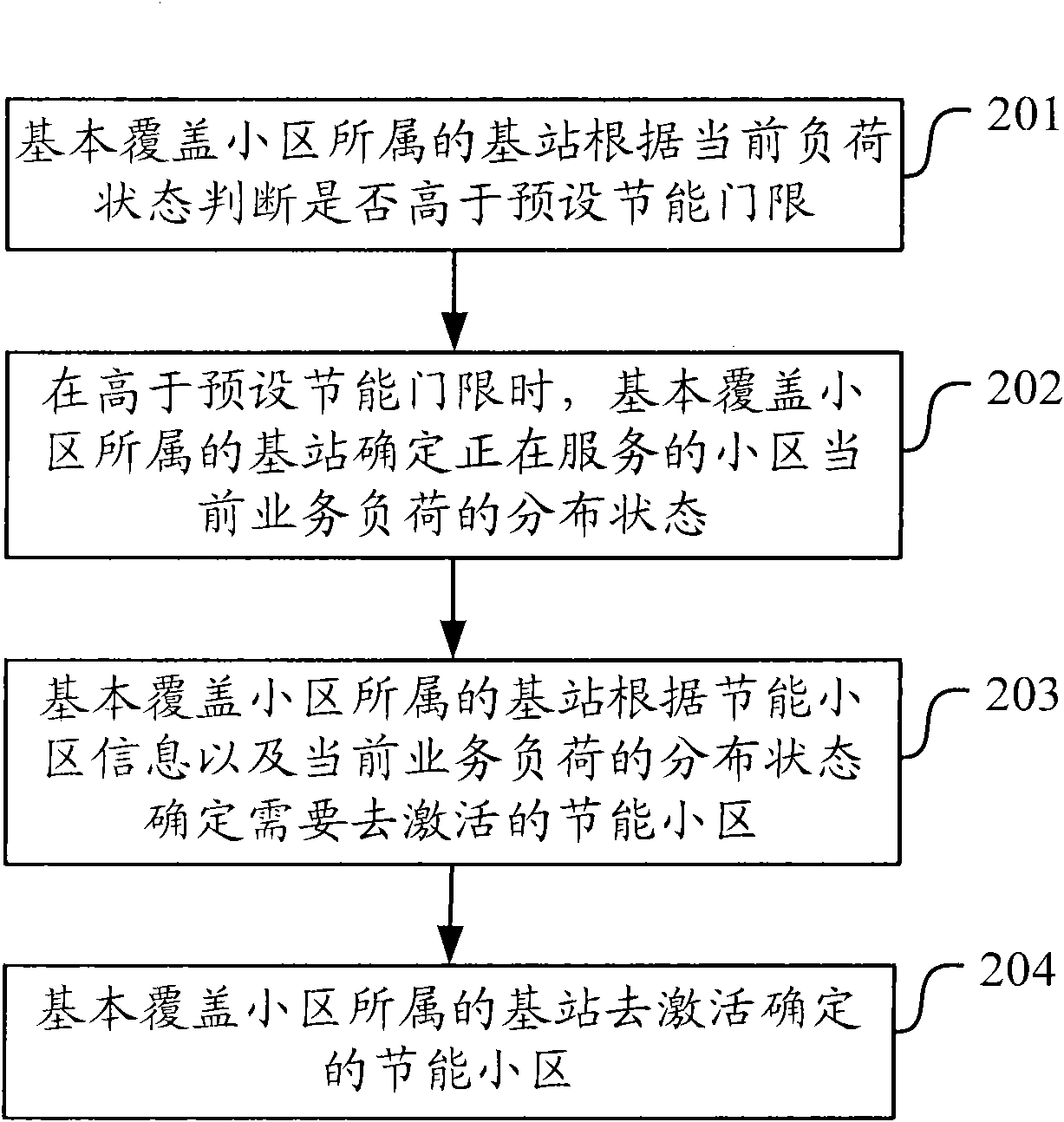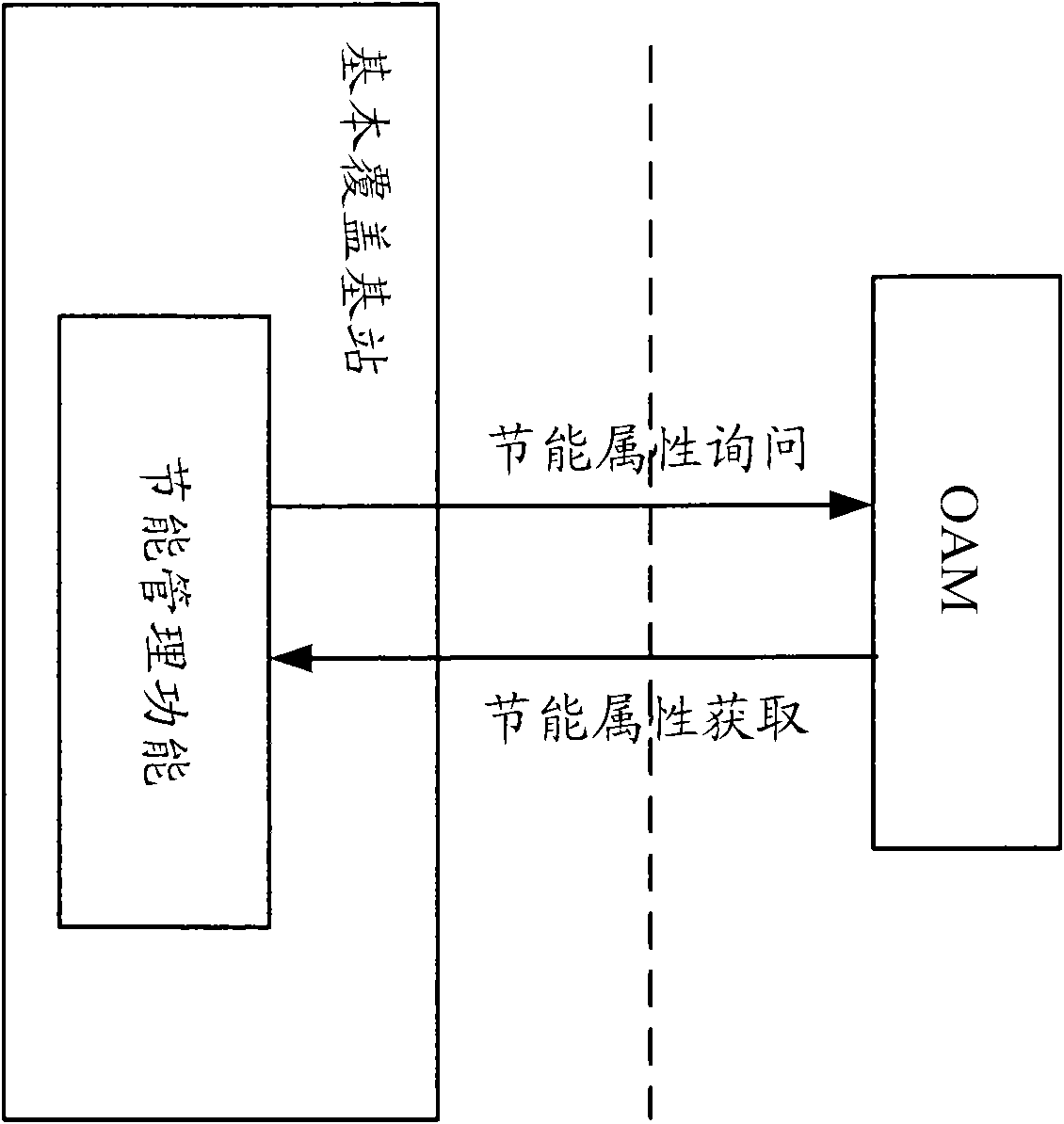Control processing method for energy-saving cell and base station
An energy-saving community, control and processing technology, applied in the direction of energy-saving ICT, power management, energy consumption reduction, etc., can solve problems such as effective control of energy-saving communities, and achieve the effects of improving energy utilization, overcoming energy waste, and optimizing energy-saving technologies
- Summary
- Abstract
- Description
- Claims
- Application Information
AI Technical Summary
Problems solved by technology
Method used
Image
Examples
Embodiment 1
[0108] Figure 4 It is a schematic diagram of the implementation flow of the energy-saving cell control processing method in Embodiment 1. As shown in the figure, the following steps may be included when deactivating the energy-saving cell:
[0109] Step 401, the basic coverage cell judges whether it is higher than a certain threshold according to the current load state, if yes, turn to step 402, otherwise stop deactivating the energy-saving cell;
[0110] Step 402, the serving cell determines the distribution state of the load;
[0111] Step 403, the serving cell acquires energy-saving cell information including attributes and state information of the energy-saving cell;
[0112] Step 404, the serving cell determines the energy-saving cell that needs to be deactivated according to the coverage area information of the energy-saving cell, combined with the load distribution and the capability of the energy-saving cell (information such as bandwidth and frequency obtained throu...
Embodiment 2
[0117] In this embodiment, in an Inter-RAT scenario, the basic coverage cell initiates a selective energy-saving cell activation process from the perspective of implementation by each device.
[0118] The base station equipment that provides basic coverage of the cell, its main functions are as follows:
[0119] 1: After judging that the load reaches the threshold, obtain the energy-saving community information;
[0120] 2: Determine the load distribution;
[0121] 3: Deactivate the energy-saving cell through the S1 interface.
[0122] OAM equipment, its main execution functions are as follows:
[0123] 1: Configure energy-saving cell information to the base station equipment to which the basic coverage cell belongs;
[0124] 2: Configure energy-saving policies and load thresholds for the base station equipment to which the covered cell belongs.
[0125] Provides base station equipment for energy-saving communities, and its main functions are as follows:
[0126] 1: Recei...
Embodiment 3
[0129] In this embodiment, in an Inter-eNB scenario, the basic coverage cell initiates a selective energy-saving cell activation process from the perspective of implementation by each device.
[0130] The base station equipment that provides basic coverage of the cell, its main functions are as follows:
[0131] 1: Obtain energy-saving community information after judging that the load reaches the threshold;
[0132] 2: Determine the load distribution;
[0133] 3: Deactivate the energy-saving cell through the X2 interface.
[0134]OAM equipment, its main execution functions are as follows:
[0135] 1: Configure energy-saving cell attribute information to the base station equipment to which the basic coverage cell belongs;
[0136] 2: Configure energy-saving policies and load thresholds for the base station equipment to which the covered cell belongs.
[0137] Provides base station equipment for energy-saving communities, and its main functions are as follows:
[0138] 1: R...
PUM
 Login to View More
Login to View More Abstract
Description
Claims
Application Information
 Login to View More
Login to View More - R&D
- Intellectual Property
- Life Sciences
- Materials
- Tech Scout
- Unparalleled Data Quality
- Higher Quality Content
- 60% Fewer Hallucinations
Browse by: Latest US Patents, China's latest patents, Technical Efficacy Thesaurus, Application Domain, Technology Topic, Popular Technical Reports.
© 2025 PatSnap. All rights reserved.Legal|Privacy policy|Modern Slavery Act Transparency Statement|Sitemap|About US| Contact US: help@patsnap.com



